From the Alps to the Pyrenees, Europe is home to some of the most beautiful mountains in the world. Tucked into valleys between those peaks, straddling foothills, or lapping at the edge of lakes and ocean inlets are countless picturesque mountain towns and villages. Each of these historic hamlets radiates a charm that becomes even more irresistible when the winter snowfalls. From Italy to Norway and across the Alps, winter makes these European mountain towns all the more enticing.
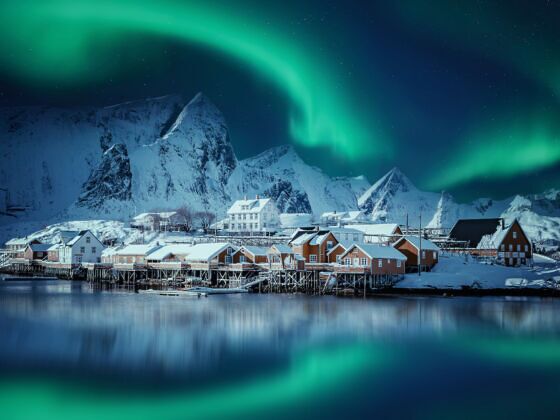

The 16 Most Stunning Snow-Covered Winter Villages in Europe
1. Salzburg, Austria
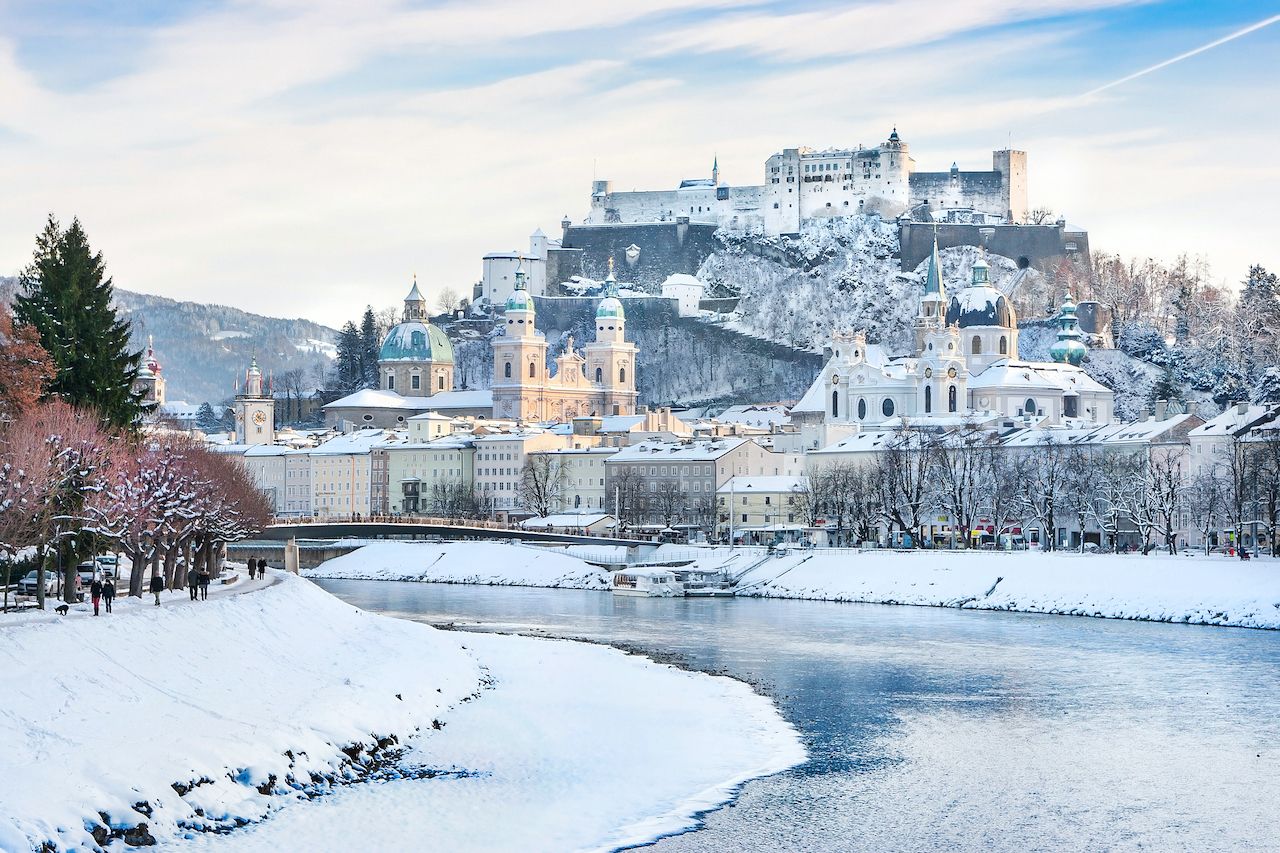
Photo: canadastock/Shutterstock
The birthplace of Wolfgang Amadeus Mozart, possibly the world’s most celebrated composer, lies in the northwest corner of Austria, where it perfectly blends city culture and rugged Alpine lifestyle. Salzburg means “salt mountain,” and its famed salt mines account for some of the wealth that resulted in the town’s elegant, baroque architecture — which is frosted with a delicate coat of white snow throughout the winter. Towering above the town, the Fortress Hohensalzburg headlines Salzburg’s UNESCO World Heritage site and once-protected the salt mines below. Gazing at the surrounding mountains from the city center is the perfect way to feel as though you’ve stumbled into a Charles Dickens film.
2. Zermatt, Switzerland

Photo: Bernsten/Shutterstock
With its pyramid-like rock spire, the Matterhorn might just be the world’s most iconic peak. Squeezed into a valley nearly at the base of that most memorable mountain, the town of Zermatt itself is no less striking, an expansive mountain village in Switzerland where the signature chalet architecture has become a staple in ski towns the world over. Zermatt so closely resembles a mountainous fairytale that Disney filmed Third Man on the Mountain here in 1958, and that effect is only amplified when the sloped rooftops of the village are loaded up with snow. If ever there were a place to enjoy year-round skiing and Swiss fondue, it’s in Zermatt next to the towering and elegant Matterhorn, one of the world’s most dangerous mountains to climb. Although you can admire the mountain from many spots in town and ski or snowboard with it in view for most of the day, there are also a few other good ways to get a closer look.
3. Hallstatt, Austria
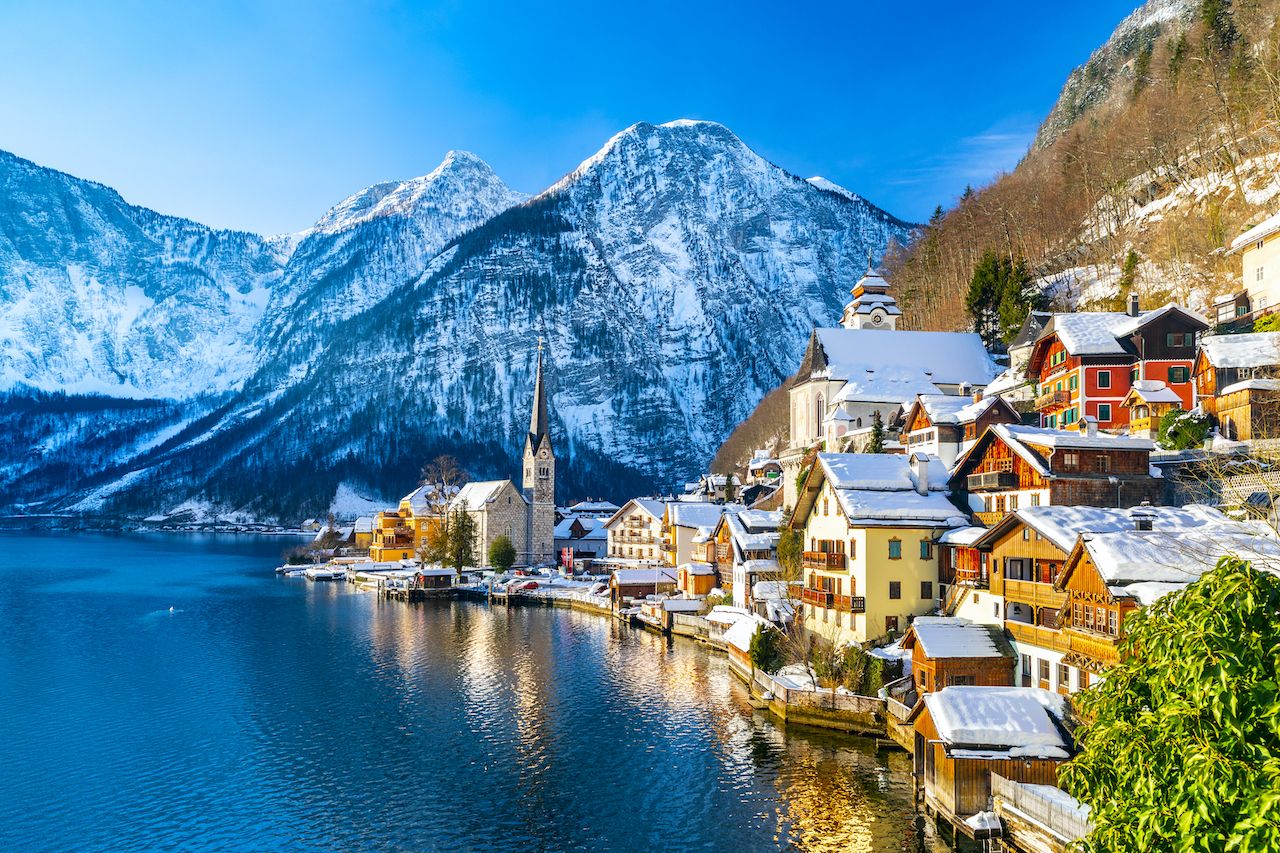
Photo: proslgn/Shutterstock
On the western shore of Lake Hallstatt, the Austrian town that shares its name with the stunning alpine lake, is a postcard come to life. The lake itself covers over three square miles and, reaching depths over 400 feet, dazzles with its piercing blue color. From town, guests can take the funicular to the Skywalk Hallstatt overlook platform for their own postcard shot of that very lake and the Alpine peaks that surround it. They can also visit an underwater salt lake and tour the salt mines that once provided a major source of income for the town. Looking out onto snow-capped peaks, over the tiny village and to the crystal lake is considered one of the most iconic experiences in the Austrian Alps. The entire area is a UNESCO World Heritage site, and it’s so beautiful that China erected a replica of the village in Guangdong Province in 2011.
4. Mittenwald, Germany
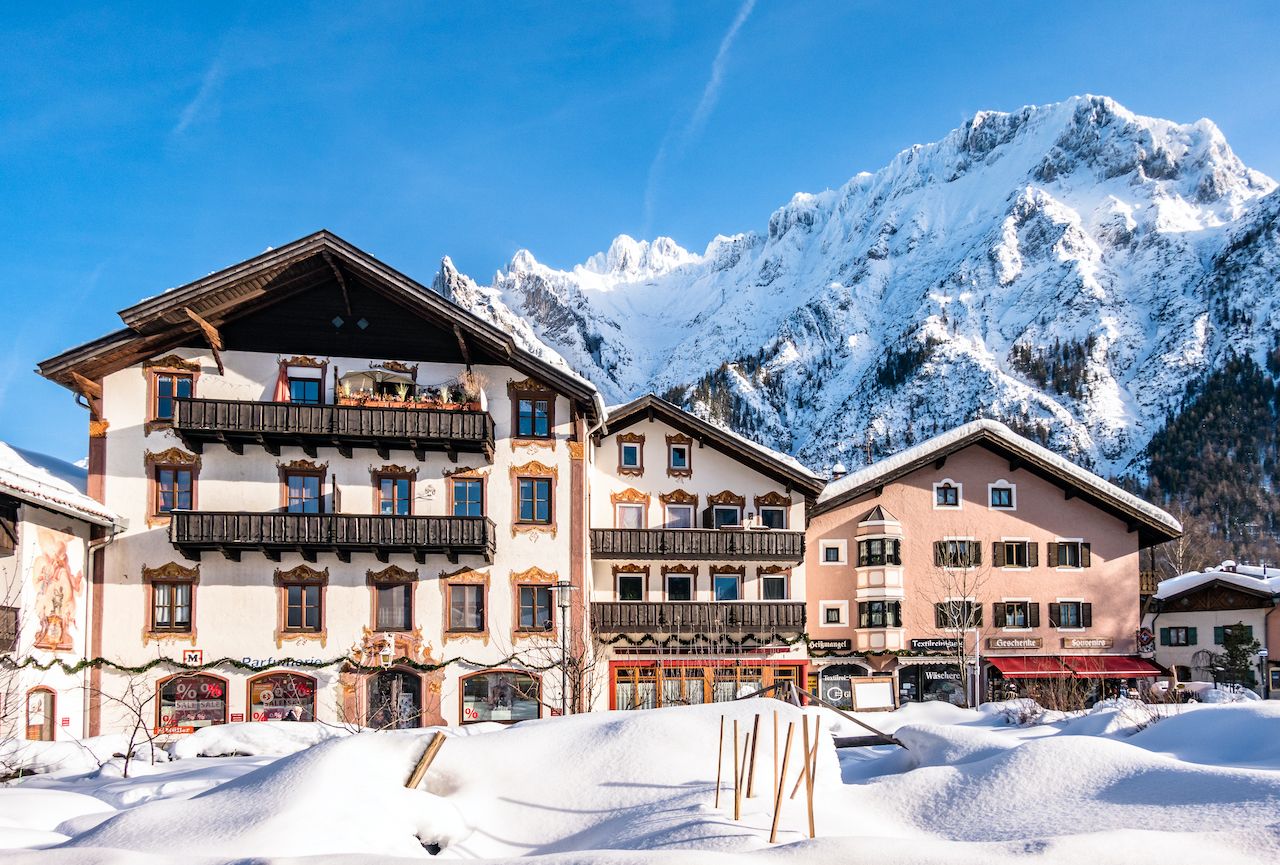
Photo: FooTToo/Shutterstock
No Bavarian mountain town is more classically Bavarian than Mittenwald. Downtown, the Obermarkt district fills with snow and revelers who stroll between the famed St. Peter and Paul Church and chalets, restaurants, and pubs. Mittenwald is known as the “village of a thousand violins” as it was once a major manufacturer of the instrument, and many a musician still charms the town with tunes on busy evenings. Each December Mittenwald hosts one of Germany’s most enchanting Christmas markets, with residents and visitors perusing wooden stalls while sipping hot Feuerzangenbowle.
5. Alesund, Norway
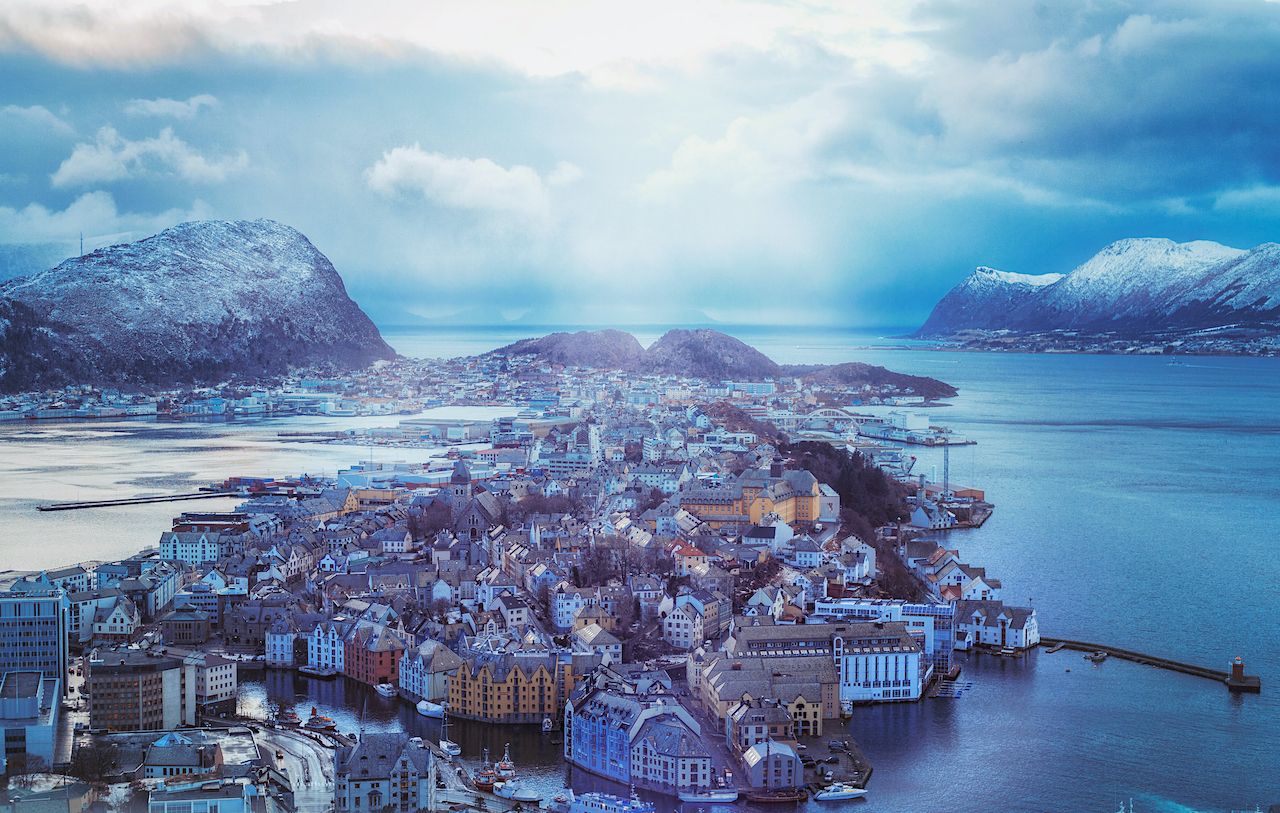
Photo: Cressida studio/Shutterstock
Norway’s fjordland is a common dream vacation for Americans, and these photos of the waterside mountain town of Alesund make it clear why. Its location embodies what makes coastal Norway a unique place: towns built at sea level surrounded by fjords, peaks, and inlets that offer views unlike any in the world. In the winter, downhill skiing, ski touring, and snowshoeing are all within easy reach. Or you could just relax and admire the northern lights string over snow-capped peaks and the Norwegian Sea simultaneously. In fact, skiing is possible on its glaciers in summer as well — as is heading out onto the water to gaze back at the town’s gumdrop-colored buildings.
6. Cortina d’Ampezzo, Italy
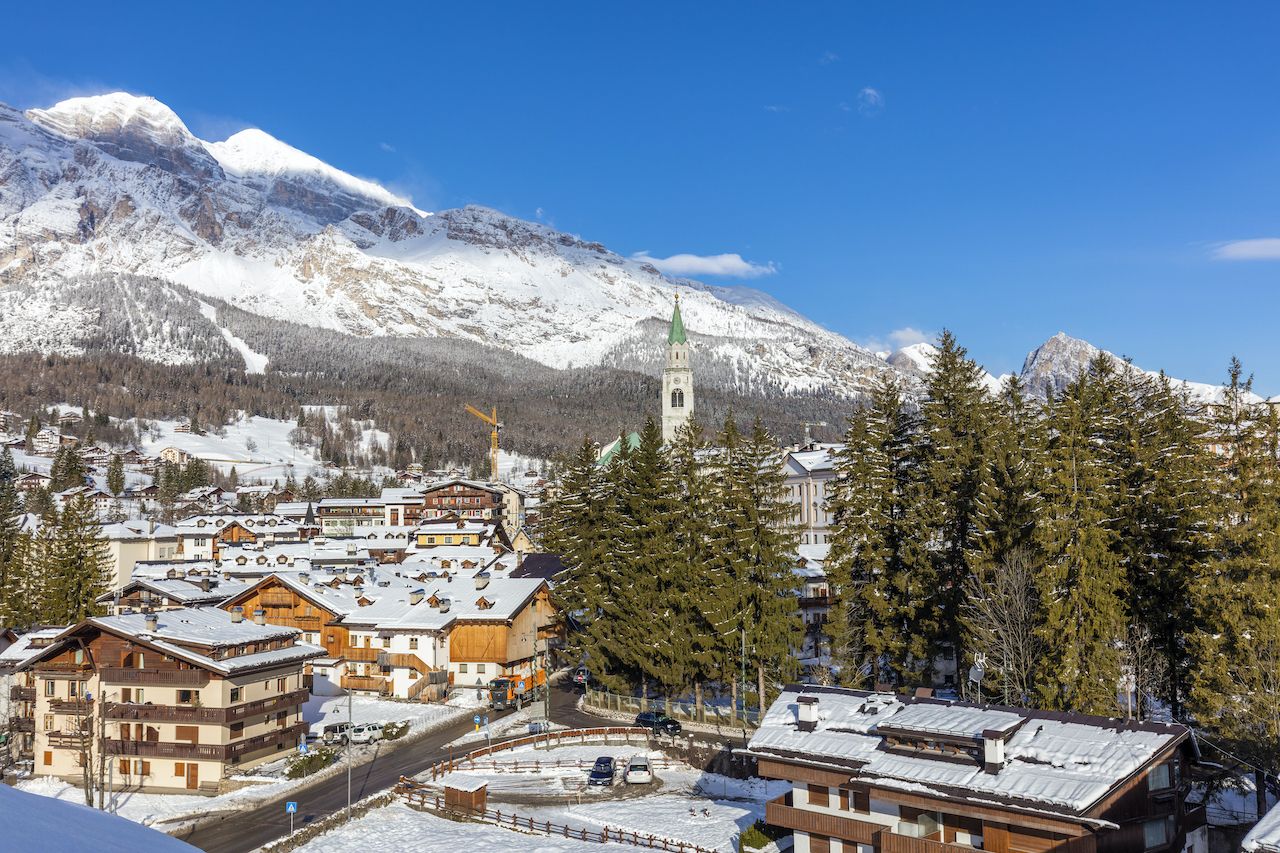
Photo: posztos/Shutterstock
Italy’s Dolomites range contains some of the most irresistible ski areas in Europe, combining as they do slopes for every type of ski ability with stunning vistas, incredible cuisine, and a friendly mountain vibe. Amid all the towns in the Dolomites, Cortina is known as “the pearl.” The site of the 1956 Winter Olympic Games lies in the Ampezzo valley where two rivers meet and is a place to be enjoyed not just on skis, snowboards, cross-country skies, or snowshoes, but in a pair of cozy winter boots. The town is an excellent place to shop or to step into one of its many restaurants for a unique meal that showcases the area’s Alpine Austrian influences, with zesty salamis and rich cheeses, but, of course, inimitable pastas as well.
7. Chamonix, France
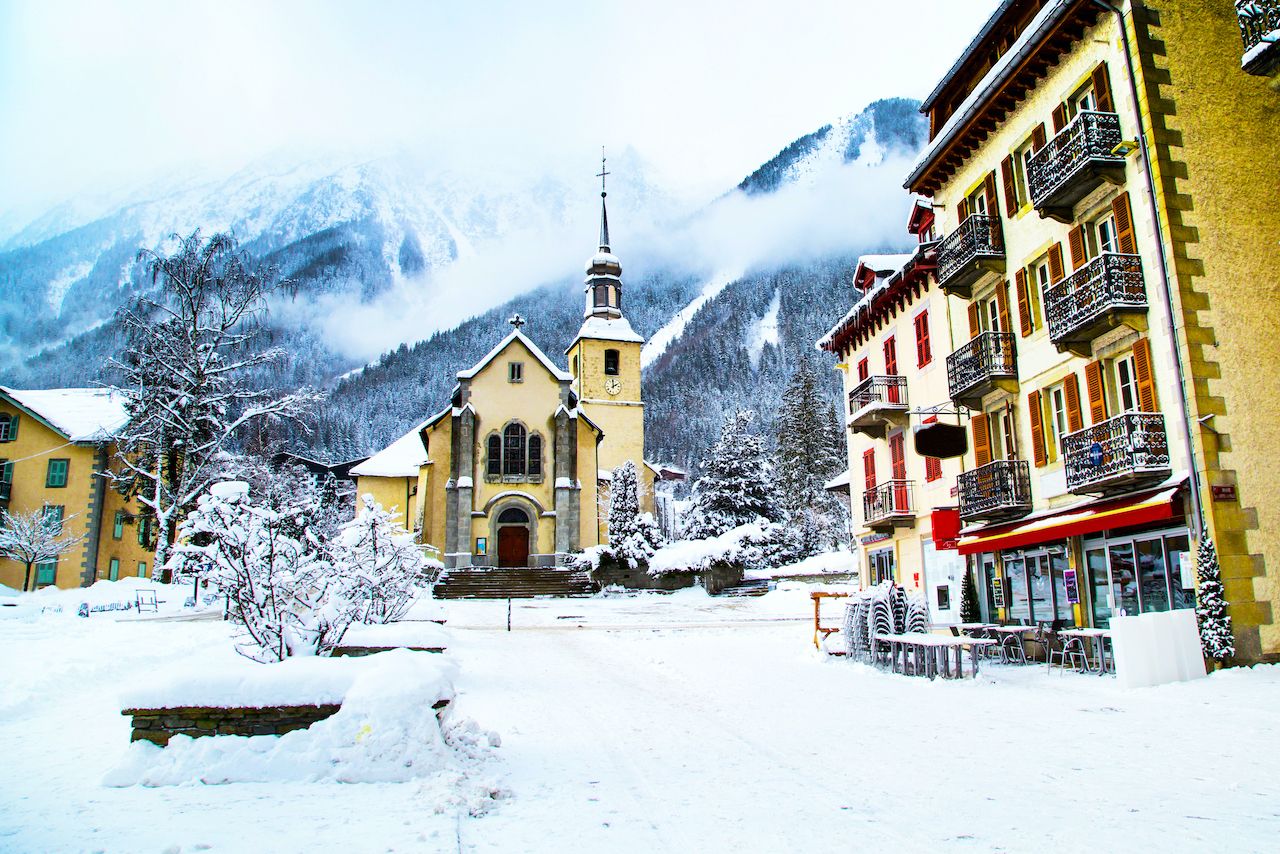
Photo: Nataliya Nazarova/Shutterstock
Chamonix is well known for its fearsome peaks, and it attracts not just some of the most rugged and fearless athletes in France but also in the world. It’s understandably a favored destination to film the kind of ski films that make you wonder how some of the feats are humanly possible. But Chamonix is also very French, with unforgettable restaurants serving wines from the Savoie region. So if ski touring with a guide and bypassing deep crevasses is not on your travel bucket list, not to worry. There’s plenty to do in the town’s shops, brasseries, and cafes. Chamonix’s historic town center is a great place to be once the snow starts falling.
8. Kitzbühel, Austria
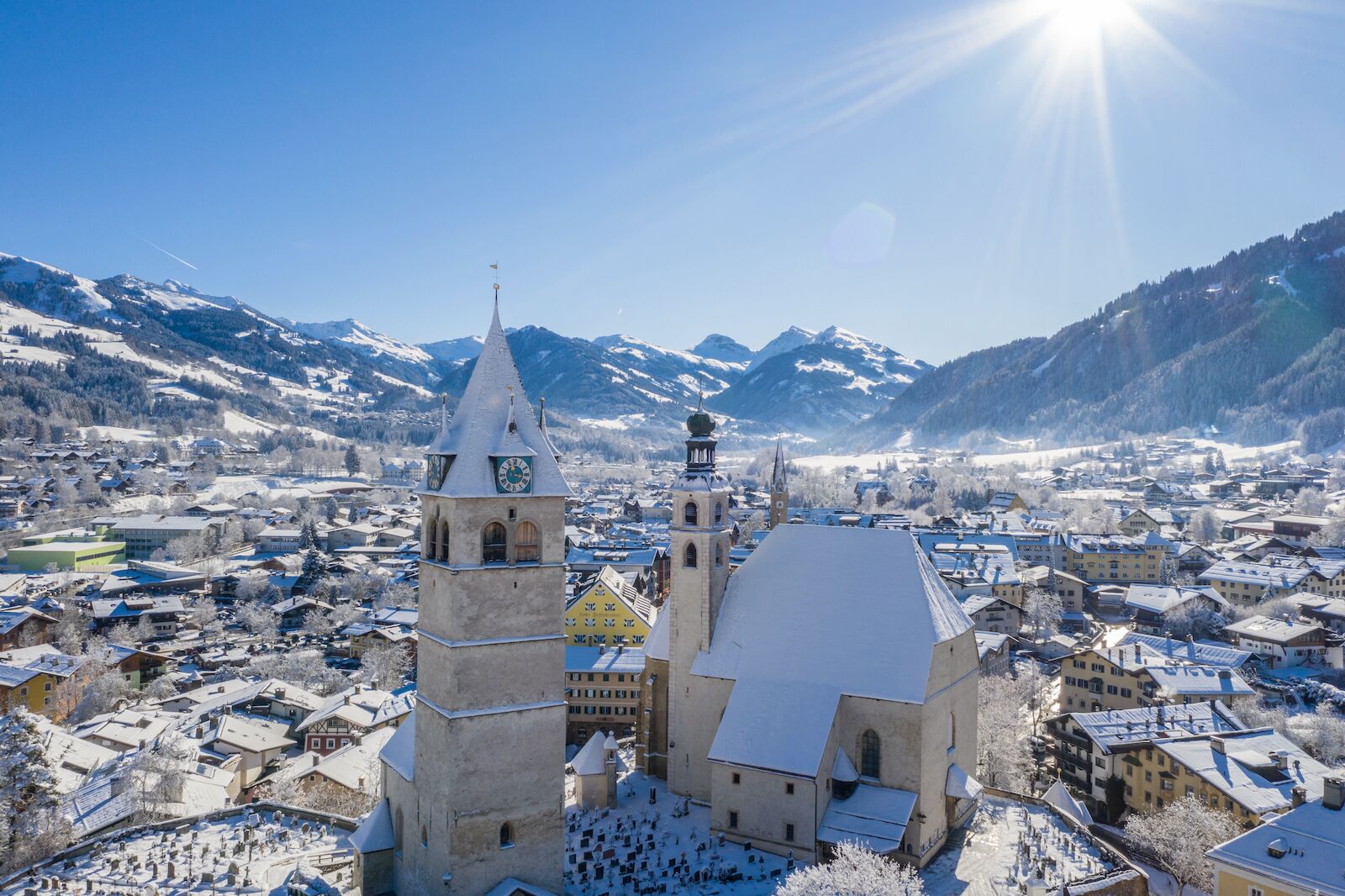
Photo: lightsandsquares/Shutterstock
Kitzbühel is a famous ski resort in a country full of famous ski resorts. What sets it apart from the rest of Austria’s winter playgrounds is not its epic downhill terrain but the elegance of the actual town. Old-school glitz and glamor is the winter way in Kitzbühel, a favorite vacation spot for wealthy Germans given its proximity to Munich. And the apres culture is as legendary as the Streif slope on Hahnenkamm mountain — the site of one of the most prestigious International Ski Federation Alpine Ski World Cup races every year — whether or not you actually ski.
9. Reine, Norway

Photo: Yevhenii Chulovskyi/Shutterstock
As darkness descends on the Northern Hemisphere, an eerie, ethereal glow ascends over some of its northernmost parts. Arctic Scandinavia is one of the best regions in the world to see the aurora borealis, and the village of Reine, Norway, ranks among the best bases for viewing the polar lights. Located above the Arctic Circle on the island of Moskenesøya, the rugged yet charming village has become an icon of the Lofoten archipelago, famed for its fishing huts and the imposing peaks and inlets of the surrounding Reinefjord.
10. Rothenburg ob der Tauber, Germany

Photo: Marina Datsenko/Shutterstock
A little more than 200 miles of Southern Germany has been dubbed the Romantic Road. The northern Bavarian town of Rothenburg ob der Tauber is a stop along this route — arguably one of the most romantic. The old town center is the epitome of charm, with half-timbered houses and cobblestone lanes that would make Snow White blush. Come December, the impossibly quaint town defies all odds and becomes even cuter as the smell of mulled wine wafts through Rothenburg’s fairy-lighted Christmas market. In fact, the holiday spirit is so strong in Rothenburg that there’s a German Christmas Museum open all year round.
11. Bled, Slovenia
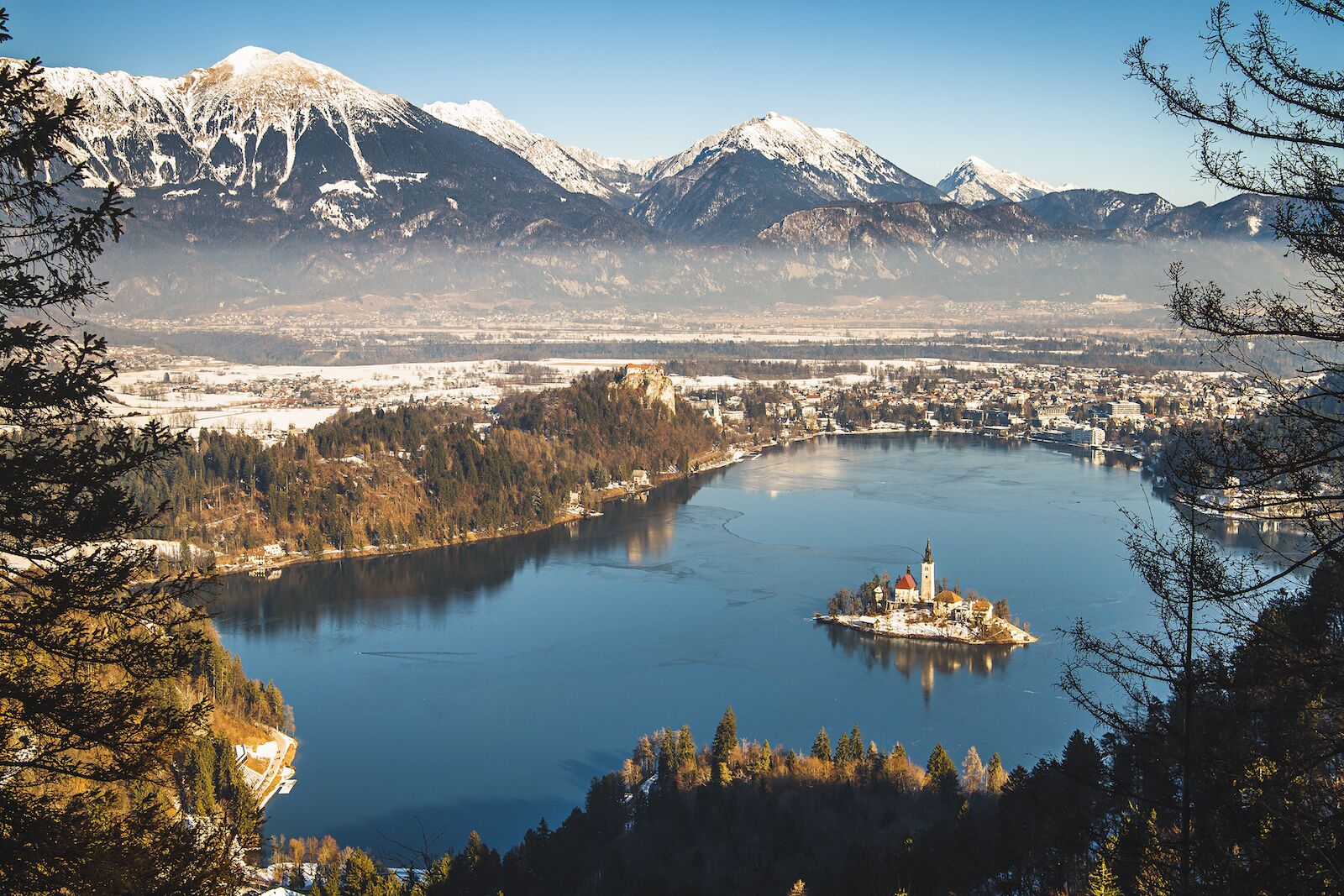
Photo: Tomas Kulaja/Shutterstock
Lake Bled has become the mascot for Slovenian destinations, with its adorable island castle and the breathtaking scenery of the Julian Alps all around. Whether you prefer the endlessly alluring resort town in summer or winter is really a matter of preference. Where summer brings activities like hiking, cycling, paddle boarding, and devouring Bled cream cake on outdoor patios, winter brings reciprocal recreation like snowshoeing, skiing, ice skating, and sipping mulled wine at the annual Christmas Market, AKA the Bled Winter Fairytale.
12. Jokkmokk, Sweden
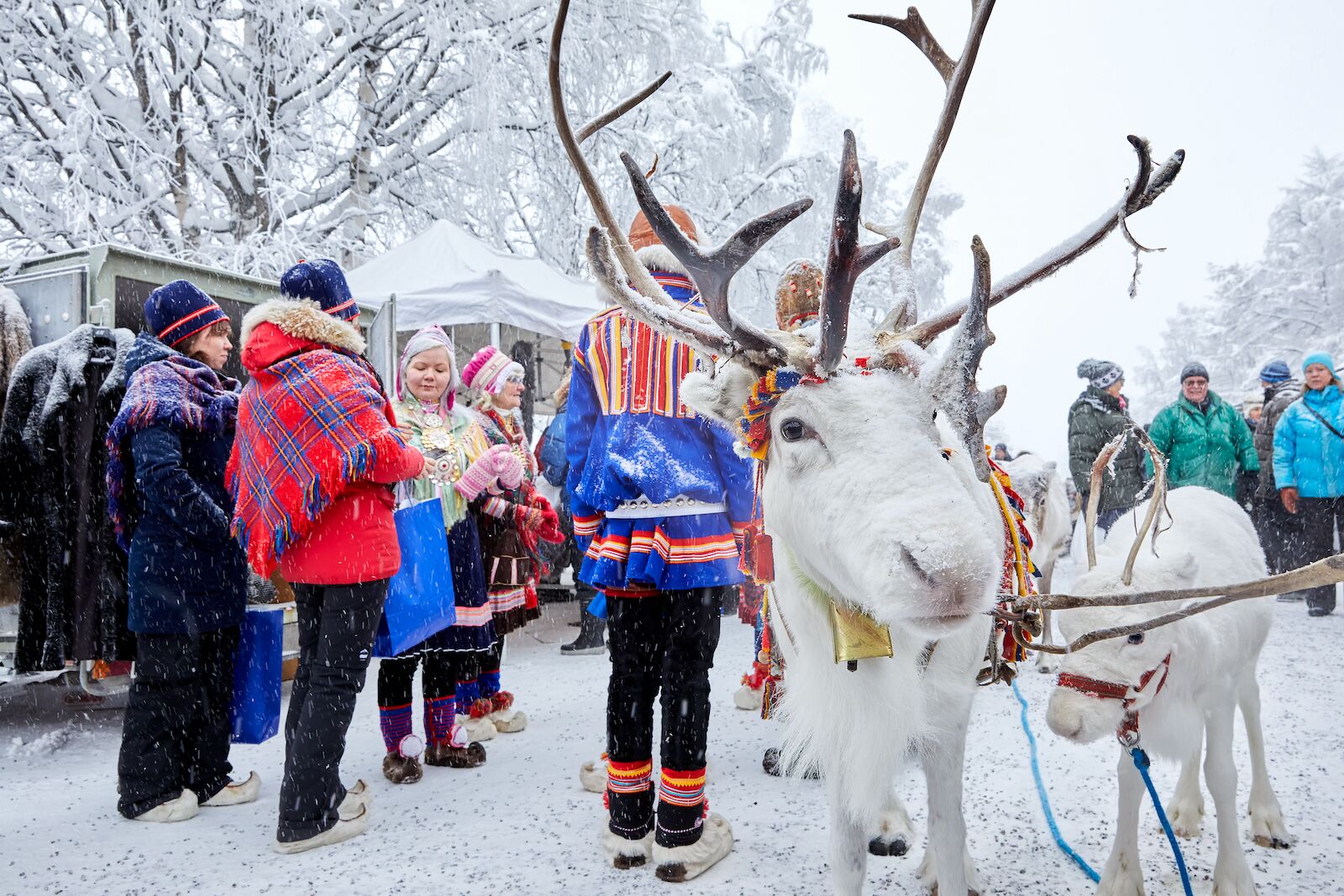
Photo: Tommy Alven/Shutterstock
Jokkmokk is a town in Swedish Lapland located above the Arctic Circle. It’s a traditional territory of the Sámi people and remains a cultural epicenter of the Sápmi region. For more than 400 years, the first Thursday in February has commenced a special event for the Sámi people — the three-day-long Jokkmokk Winter Market, a beautiful display of art exhibitions, concerts, dances, lectures, and more. Stall sell a range of local goods, from handmade knives to colorful sweets, while restaurants serve traditional foods like reindeer, elk, morels, char, berries, and herbs. Know that temperatures can drop as low as -40 degrees if you plan to join.
13. Menton, France
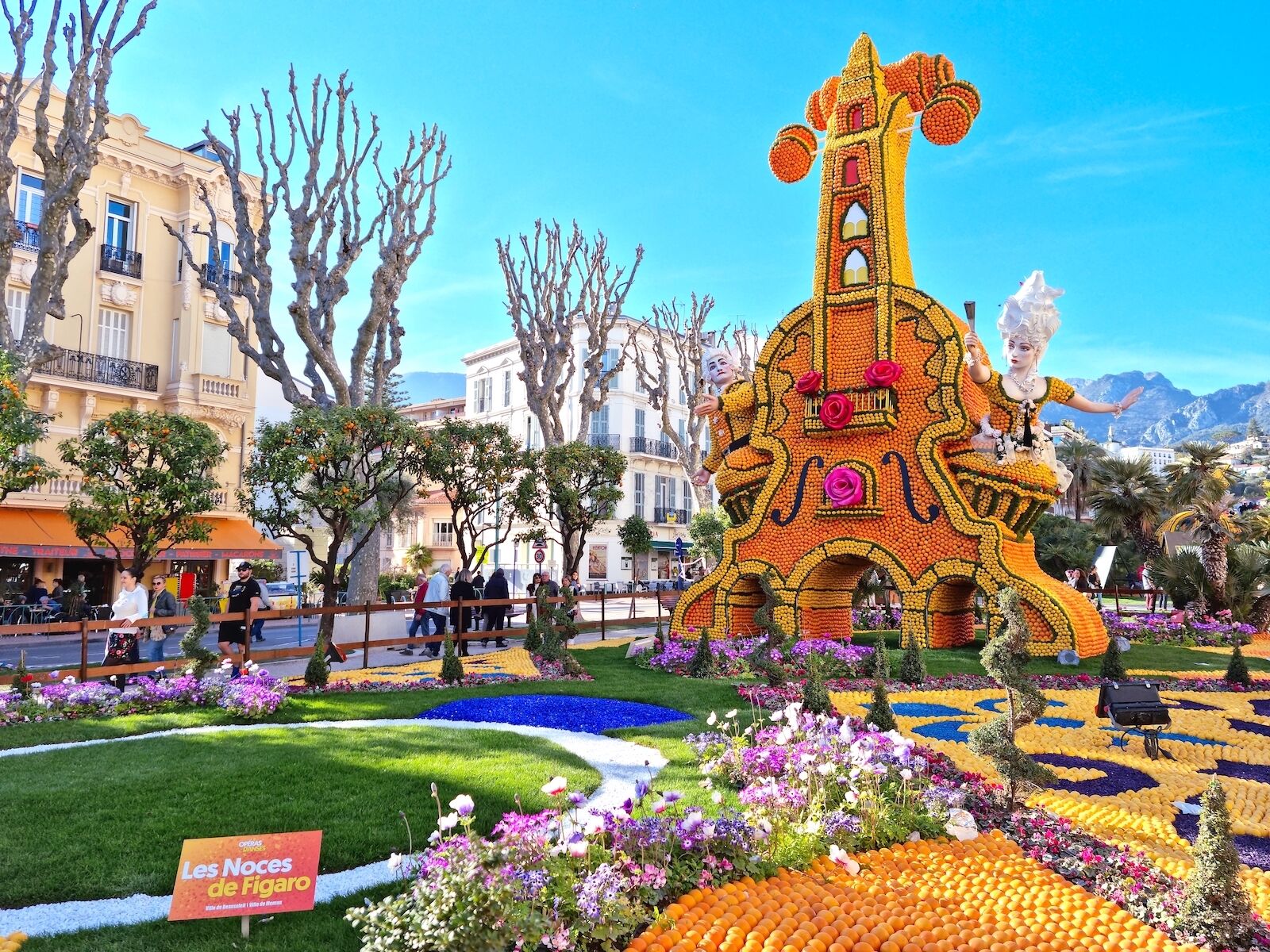
Photo: Travel-Fr/Shutterstock
Menton is one of the most dazzling towns in the French Riviera, which makes it an obvious choice for summer travels. But one annual event — La Fête du Citron, or Lemon Festival — makes it even dreamier in late winter. To celebrate its prolific citrus growth and usher in spring, Menton hosts a zesty carnival throughout the second half of February. Parades take place day and night, showcasing massive floats made out of lemons and oranges, bringing roughly 90 tons of citrus and 200,000 visitors to the 30,000-person town each year.
14. Vipiteno, Italy
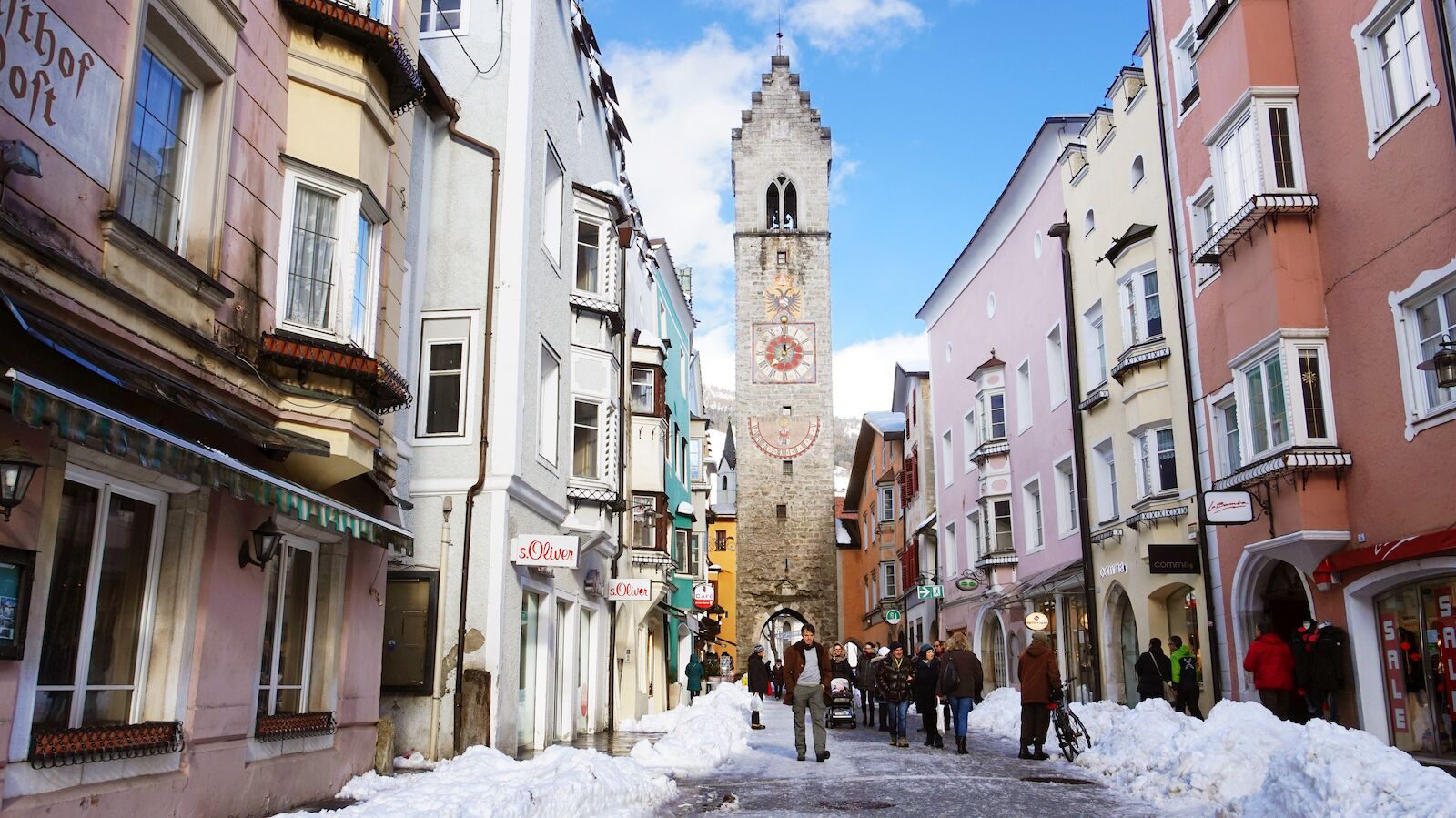
Photo: Zigres/Shutterstock
Vipiteno is a small foothill village in the South Tyrol region of northern Italy near the Austrian border. The medieval main street, Via Citta Nuova, is lined with colorful houses that lead to the 150-foot landmark Torre del Dodici clocktower. The mountains surrounding Vipiteno offer year-round access to outdoor adventures like hiking, cycling, and paragliding. But the town’s very own ski area, Rosskopf, makes it one of Europe’s most beautiful winter villages.
15. Rovaniemi, Finland
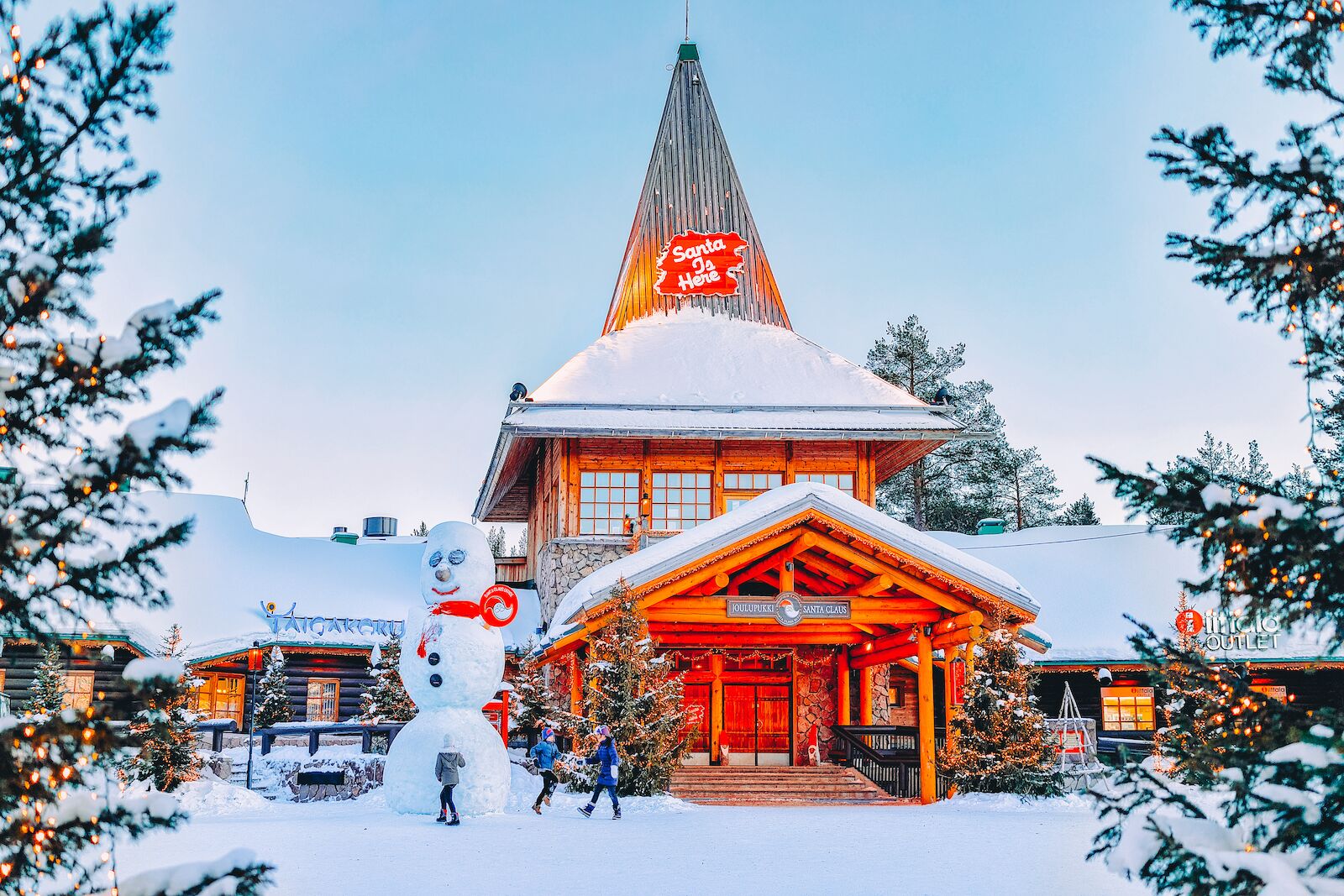
Photo: Roman Babakin/Shutterstock
Nowhere in Europe comes alive during winter as literally as Rovaniemi, AKA the “official hometown” of Santa Claus. Every year, more than half a million visitors make the Arctic trek to Finnish Lapland to see Santa Claus Village, snap photos with the big guy and meet the elves who run his post office, take reindeer sleigh rides, and dine in an igloo restaurant. Santa-themed activities run year round in the village, but December is the best time to visit Rovaniemi. Even if you’re lacking in Chrismas spirit, winter brings all sorts of wonders, from northern lights shows to epic snow sports like downhill and Nordic skiing at Ounasvaara Park.
16. St. Moritz, Switzerland
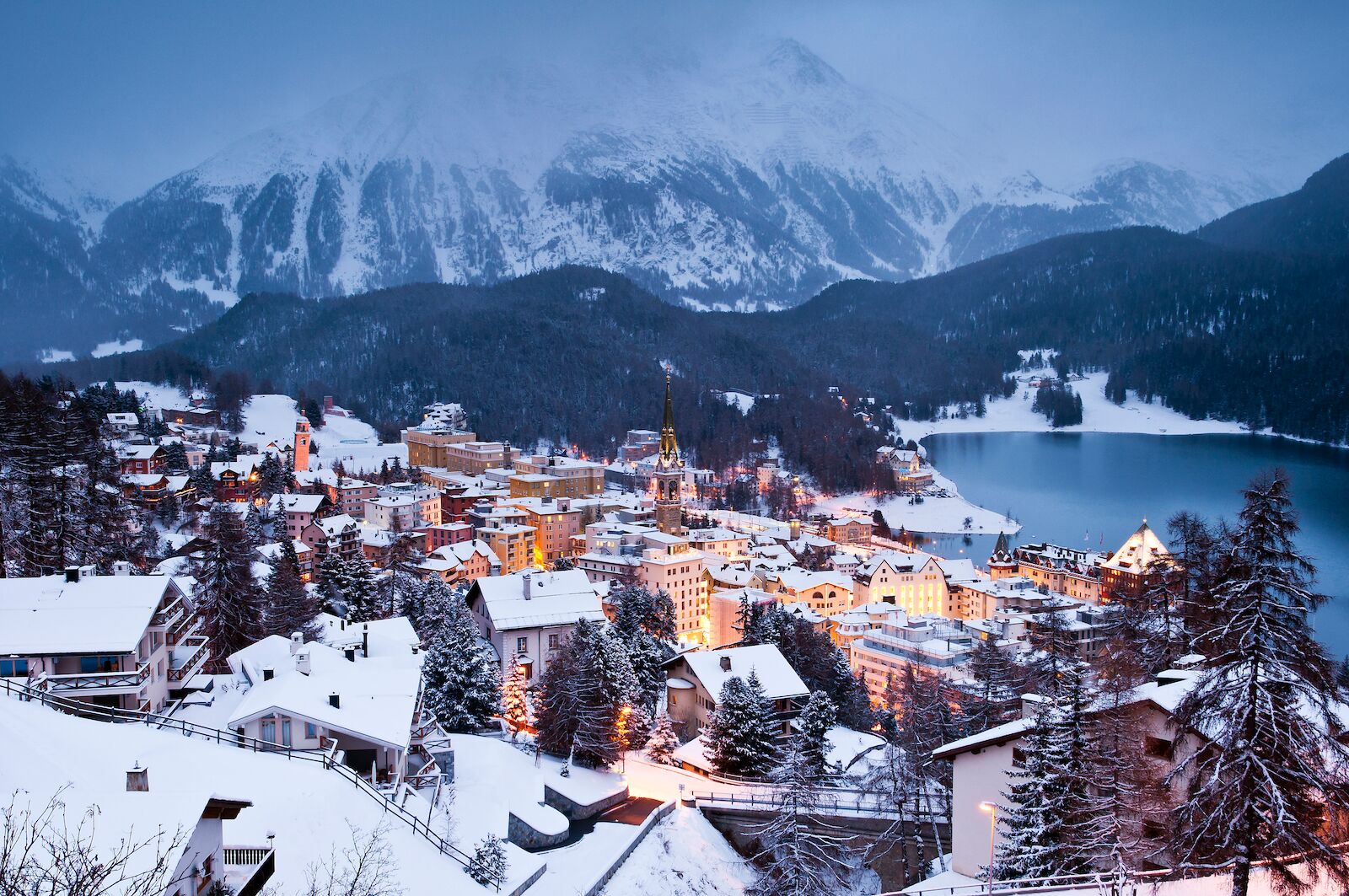
Photo: Stefano Politi Markovina/Shutterstock
The Swiss Alps are synonymous with dreamy ski resorts. If Zermatt is the mother of all Swiss ski resorts, then St. Moritz is the beloved stepmom — a very close second in terms of popularity. Zermatt has taller peaks, including the famous Matterhorn, at the base of which sits a car-free town center peppered with quintessential alpine chalets. St. Moritz is more developed but also more dazzling — and there’s simply more to do there during the winter season. From world-famous tobogganing and wallet-busting shopping to snow yoga, teatime or caviar tasting, museum hopping, and long spa days, the longtime celebrity haunt is way more than its slopes.